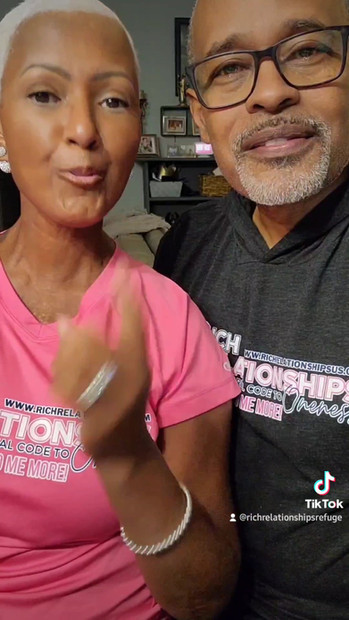A career path is a process an employee uses to chart a course within an organization for a career path and career development.
Career routing involves understanding the knowledge, skills, personal characteristics, and experience he needs to advance his career laterally or through promotions and department transfers.
Career advancement requires an honest look at your career goals, skills, required knowledge, experience, and personal characteristics. Creating a career path requires getting what you need to pursue your career in these areas.

You owe yourself a career.
Are you reaping the benefits of a carefully developed, written, employer-endorsed career plan? Creating a career plan is essential to managing your career and success throughout your life.
In some organizations, performance appraisal is also an opportunity for career advancement. In organizations with a formal process, the career path is also considered to have organizational support.
The professional path outlines your ultimate goal as well as the actions, encounters, and growth you'll need to advance along the route. A career plan provides you a feeling of direction, a tool to track your professional development, and the chance to hit important career milestones.
Developing a career path is easier and more supported in an organization with a PDP process or an effective performance appraisal or career planning process.
However, you, as an individual employee, can create your career path. You are the most valuable important person in your career. You deserve a thoughtful career path.
How to develop a career plan?
You can develop a career path by looking at the desired job within your organization. Then, with the help of your supervisor or manager and the human resources team, chart a course through roles and departments that are likely to be the career path that will enable you to achieve your goal.
Recognize that achieving your goal of getting the job you want may require job changes, department transfers, and job promotions. For example, if you'd like to be a director, but your current department doesn't have that role, you may want to change teams now to work toward promotion to become a director in the future.
To achieve your desired goal, as you progress through your career with the organization, you will need to develop skills, pursue employee development opportunities, and gain experience in people management, presentations, strategy, and project management.
Development of career paths and employee ranks.
Career pathways and career ladders are two established methods for employees to advance inside a company. A career ladder is the progression of positions in specific career fields, ranked from top to bottom based on level of responsibility and salary. Career paths include different forms of career progression, including traditional vertical career ladders, dual career ladders, horizontal career structures, out-of-organization career progression, and career progression.

Employees are often more engaged when they believe their employer cares about their growth and offers ways to achieve individual career goals while fulfilling the company's mission. A career development plan provides a continuing method for workers to advance in their existing roles, be promoted, or move on to new or other positions. The establishment of career pathways may significantly influence the company, enhancing morale, work satisfaction, motivation, productivity, and responsiveness while achieving departmental and organizational objectives.
This conventional career path of a person inside a single employer vanished
in the 20th century. The US economy has seen several boom-and-bust cycles since the late 1970s, leading to significant layoffs and restructuring at many businesses and a reluctance to recruit staff before and after crises. Additionally, union membership decreased at this time due to the transition from the industrial sector to a knowledge economy, thus weakening the contract that had previously implied employee devotion to lifelong employment. Most middle management levels were reduced or eliminated, flattening the organizational structure. To advance or increase their income, workers often had to seek elsewhere.
Thus, a new paradigm emerged where individuals are in charge of their ladder, where they place it, how long they keep it and how far they want to go. Traditional career ladders still exist in the 21st century but operate in an environment where:
The workforce is undergoing continual and dramatic change.
The way work is organized and performed continues to evolve and change.
Traditional racing will continue to decline.
Element-by-element breakdowns of jobs are followed by subcontracting.
It might be challenging to encourage employees who deal with a non-employer workforce lacking in rational career advancement or career ambitions.
Over employment security and stability, workers place a higher value on career advancement, job variety, and job enrichment.
Work has been redesigned to meet the growing demand for flexibility so employees can choose to work where and when they want.
Development of career paths and traditional career ladders
Simple organizational-wide career planning strategies include talking to managers about their workers' career needs and implementing career mapping with them. Creating official career pathways for each job inside the business is one of the most challenging tasks. The foundation of the conventional career ladder is the belief that employee wants to go as far as they can and that the company consistently presents opportunities.
career mapping
Managers and human resource specialists may use career mapping when conversing with staff members about their career goals. Employees may think strategically about their career routes and how to continuously advance within the company using career maps.
Career mapping involves three steps:
Self-appraisal.
A manager deals with the employee to explore her knowledge, skills, abilities, past experiences, accomplishments, and interests.
Custom race map.
Creating a personalized career map involves identifying other organizational positions that meet employee needs. The work may be a secondary transfer or promotion to another job family. In either case, the place should build on the employee's previous experiences, interests, and motivation while also developing new knowledge, skills, and abilities (KSAs) for the employee and giving them something to work on. Stay engaged.
We are exploring other opportunities.
Examining additional employment options as they arise inside the business is the ultimate purpose of career mapping.
For managers and workers to effectively execute career mapping, HR must provide the appropriate tools.
HR must develop the necessary resources to facilitate the process for managers and employees to practice career mapping successfully.
Traditional Career Ladders and Career Development Strategies
In a traditional career system, the individual is hired and, through experience, education, and opportunity, promoted to levels that include additional responsibilities and proportional pay. This progression within an organization continues until the individual leaves the employer for another option, retires, reaches a point where promotion opportunities no longer exist, chooses to decline subsequent promotion opportunities, or is terminated.
Common challenges with stairs and traditional pathways
On a traditional career ladder, various problems can arise, including the following.
To manage or not to manage. In many organizations, the first of many steps in a person's career is that of a single employee. However, an inherent difficulty in many organizations is that once a person reaches the level of the most experienced individual contributor, they must move into front-line supervision to "move on." This progression is good if the person is interested in taking the next step and can gain supervisory and management skills.
However, if the person does not want to go into management but wants to receive additional compensation, there is a problem. When this situation arises, a common reaction is for the individual to seek employment outside the company to earn more money. If the individual performs well, this move will not benefit the organization. In response to this situation, some employers have developed dual career paths, which are discussed in the next section of this article.

By organizing the traditional career ladder, people without the desire or ability to do the job can be pushed into management. Not only is the individual frustrated with the new challenges he faces, but the organization is frustrated that someone is in a position that is not performing to its potential.
No desire to go up. For some people, the ladder they enter an organization on is the ladder they want to stay on. Someone happy with their current level should not be expected to advance, and someone with a strong performance should not be pressured to move up the ladder. It is critical to support managers in holding frequent professional conversations with staff members to understand their goals for the present and the future, as well as to distinguish between those who want to advance their careers and those who wish to remain in their current positions.
Obstacles. Career plateaus and career stagnation can also occur within the traditional career ladder and can block an individual's ability to move up the ladder. A career plateau occurs when employees feel that they have reached the limit of their progress or that the organization has reached a level in the organization that it does not offer. Cess opportunities for future progress. This situation may cause the employee to look outside the company for other higher-level opportunities. A career stall occurs when a person is no longer psychologically engaged in work and consequently becomes less productive. A person who has reached a plateau in her career will likely stagnate unless she does something proactive to break out of the table.













Comentarios